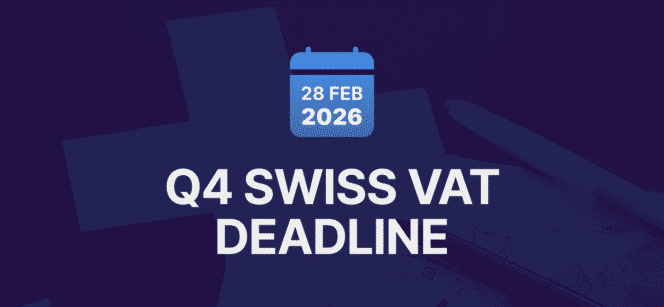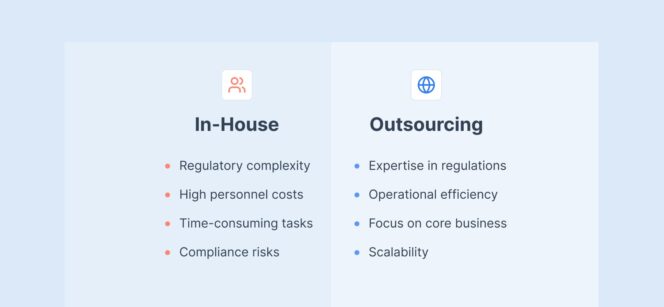Simplified or double-entry bookkeeping: which option suits you best?
Navigating your financial blueprint: selecting an accounting framework in Switzerland

For any enterprise operating within Switzerland, the method chosen to record financial activity is more than a procedural formality—it’s the very backbone of your strategic and legal framework. This choice dictates the financial language your business speaks, influencing everything from tax filings to your ability to attract investment.
The Swiss Code of Obligations (CO) presents two distinct pathways for fiscal record-keeping: a streamlined cash-basis approach and the more comprehensive double-entry accrual system. The decision is often dictated by a clear statutory benchmark: businesses generating over CHF 500,000 in annual revenue are legally required to adopt the double-entry method. For sole proprietorships and smaller entities below this threshold, the simpler method remains a viable option, though not always the most strategic one.
This guide is crafted to move beyond the legal definitions, offering you the practical insights needed to select a system that not only ensures compliance but also equips your business with the financial clarity required for sustainable growth.
Understanding simplified accounting
Simplified accounting is exactly what it sounds like: a straightforward way to track your finances. In Switzerland, it’s often informally known as Milchbüchleinrechnung, which translates to “milk booklet accounting.” The name harks back to a time when dairy farmers would simply note down their daily sales, and it perfectly captures the essence of this method: it’s simple, direct, and focuses only on the basics.
What is simplified accounting?
Think of simplified accounting like a simple household budget. At its core, it’s a list of money coming in (income), money going out (expenses), and a record of what the business owns (assets). It operates on a cash basis, meaning you only record transactions when money actually enters or leaves your bank account. There are no complex theories or principles to learn; if you can manage a spreadsheet, you can handle simplified accounting.
Who can use simplified accounting in switzerland?
Under the Swiss Code of Obligations, simplified bookkeeping is allowed for the following types of businesses:
- Sole proprietors whose annual revenue remains under CHF 500,000.
- General or limited partnerships with yearly turnover below the same threshold.
The concept of turnover—known as Umsatz in German or chiffre d’affaires in French—serves as this critical financial marker. This figure represents the total top-line income from all business activities within a fiscal year. This pivotal requirement is codified in Article 957 of the Swiss Code of Obligations, which establishes the clear fiscal tripwire. Once your annual turnover surpasses the CHF 500,000 mark, your business is legally mandated to graduate to a comprehensive double-entry accounting system.
Advantages and disadvantages of simplified accounting
Advantages:
- Easy to do: It doesn’t require specialised accounting knowledge.
- Cheaper: You likely won’t need expensive software or extensive professional help.
- Saves time: With fewer rules to follow, managing your books is much quicker.
Disadvantages:
- Doesn’t give a full financial picture: It shows cash flow but doesn’t provide a clear Profit & Loss Statement or a Balance Sheet, which are crucial for deep financial analysis.
- Not good for complex businesses: If you manage inventory, have multiple currency transactions, or complex payment terms, this method can quickly become inadequate.
- Can make it harder to get loans or investment: Banks and investors need to see a complete financial picture before they commit funds. A simplified ledger often isn’t enough to demonstrate your business’s viability.
A deep dive into double-entry bookkeeping
Double-entry bookkeeping (Doppelte Buchhaltung in German, Comptabilité en partie double in French) is the global standard for professional accounting and the method used by the vast majority of companies. It provides a complete, robust, and universally understood overview of a company’s financial health.
What Is double-entry bookkeeping?
Double-entry bookkeeping might sound complex, but its logic is surprisingly straightforward. At its heart, it’s built on a fundamental principle: every financial movement affects your accounts in two places at once. For each transaction, something is gained, and something else is given up. For example, when your business buys a new office chair, your cash is reduced (one side of the transaction) while your equipment or assets increase (the other side).
This two-sided record—called a debit and a credit—is what keeps your financial records balanced and traceable. This accounting method forms the basis for generating the two most essential financial statements:
- The Statement of Financial Position (Balance Sheet): A snapshot of your company’s financial health on a given day, showing what it owns (Assets), what it owes (Liabilities), and the owners’ value (Equity).
- The Performance Narrative (Profit & Loss Statement): The story of your company’s financial performance over a period (month, quarter, or year), showing your revenue, costs, and final net income or loss.
Who Is required to use double-entry bookkeeping?
Under Swiss law, double-entry bookkeeping is mandatory for:
- All legal entities such as limited liability companies (GmbH/SARL) and public limited companies (AG/SA), regardless of their turnover.
- Sole proprietorships and partnerships with an annual turnover of CHF 500,000 or more.
Advantages and disadvantages of double-entry accounting
Advantages:
- Gives a full and accurate financial picture: It allows for in-depth analysis and better strategic planning.
- Required for official audits: If your company needs to be audited, you must use this method.
- Trusted by investors and banks: It’s the professional standard and provides the detailed reports that lenders and investors require.
- Helps with planning: By tracking trends in your P&L statement and Balance Sheet, you can make smarter business decisions.
Disadvantages:
- More complicated: It requires a proper understanding of accounting principles.
- Costs more: You will almost certainly need accounting software and may require the help of a professional bookkeeper or fiduciary.
- Takes more time: The process is more detailed and requires more rigorous record-keeping.
Decision-making framework: A checklist for swiss companies
Choosing the right method is a crucial step. The following checklist and table will help you make the right decision based on your specific situation.
Simplified vs. double-entry at a glance
| Feature | Simplified Accounting | Double-Entry Bookkeeping |
| Who It’s Intended For | Individual businesses and partnerships with revenues below CHF 500,000. | All GmbH/AG companies. Sole proprietorships & partnerships with ≥ CHF 500,000 turnover. |
| What It Tells You | Basic cash flow (money in, money out). | Full financial health (Profit & Loss, Balance Sheet). |
| Effort & Cost | Low effort, low cost. | Higher effort, higher cost (software/professional needed). |
| Good for Getting Loans? | No. Lenders need more detail. | Yes. It’s the standard required by banks and investors. |
| Ready for an Audit? | No. | Yes. It’s the only method suitable for a formal audit. |
Key factors to guide your decision
Ask yourself these simple questions. Your answers will point you to the right method.
- What is my company’s legal form?
- If it’s a GmbH, SARL, AG, or SA, you must use double-entry bookkeeping.
- What is the total revenue I generate each year?
- If you are a sole proprietor or in a partnership and your turnover is approaching CHF 500,000, you should plan to switch to double-entry bookkeeping sooner rather than later.
- Are my business deals simple or complex?
- If you hold stock, deal with international customers in different currencies, or have complex payment structures, double-entry bookkeeping is far better suited to manage that complexity.
- Do I plan to grow the business significantly?
- If you plan to hire more employees, expand into new markets, or scale your operations, you will need the detailed insights that only double-entry bookkeeping can provide.
- Will I need funding from investors or banks?
- If the answer is yes, you have no choice. Professional funders will not consider a business that uses simplified accounting.
From financial blueprint to strategic command centre: finalising your accounting choice
Selecting your accounting methodology in Switzerland is akin to choosing the foundational blueprint for a building; the decision determines not just your current structure’s compliance, but its capacity for future expansion.
For a nascent venture or a solopreneur, a simple cash-in, cash-out ledger serves as a functional starting point, capturing the essential flow of funds with minimal complexity. However, the move to double-entry bookkeeping represents a crucial inflection point. A business with a roadmap that includes venture capital, international trade, or complex supply chains understands that the rigor of double-entry isn’t a future requirement, but a present-day necessity to be taken seriously.
This system transcends mere record-keeping to become a dynamic analytical tool. Ultimately, embracing double-entry is about aligning your company with the core tenets of the Swiss business ethos: precision, reliability, and long-term vision. You are not just choosing a bookkeeping method; you are embedding a principle of financial integrity into your corporate DNA, building a resilient foundation ready to support ambitious growth.



